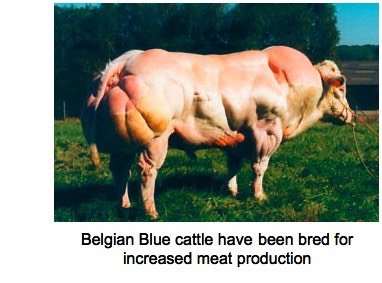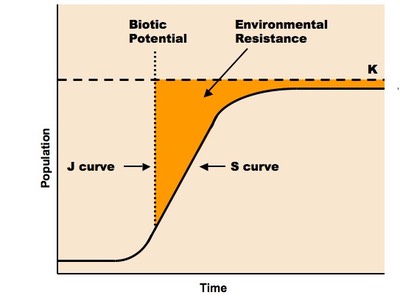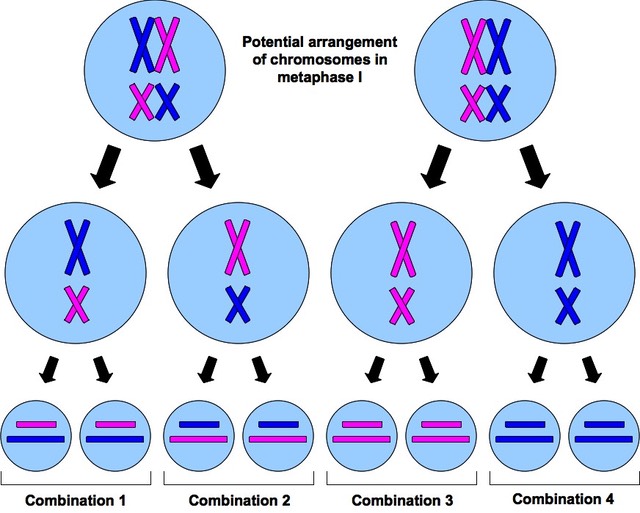5.4.1 Define evolution
Evolution is the cumulative change in the heritable characteristics of a population
5.4.2 Outline the evidence for evolution provided by the fossil record, selective breeding of domesticated animals and homologous structures
Something provides evidence for evolution when it demonstrates a change in characteristics from an ancestral form
The Fossil Record

A fossil is the preserved remains or traces of any organism from the remote past
Fossil evidence may be either:
- Direct (body fossils): Bones, teeth, shells, leaves, etc.
- Indirect (trace fossils): Footprints, tooth marks, tracks, burrows, etc.
![]() Types of Fossils
Types of Fossils
The totality of fossils (both discovered and undiscovered) is known as the fossil record
- The fossil record reveals that, over time, changes have occurred in features of organisms living on the planet (evolution)
- Moreover, different kinds of organisms do not occur randomly but are found in rocks of particular ages in a consistent order (law of fossil succession)
- This suggests that changes to an ancestral species was likely responsible for the appearance of subsequent species (speciation via evolution)
- Furthermore, the occurrence of transitional fossils demonstrate the intermediary forms that occurred over the evolutionary pathway taken within a single genus
![]() Law of Fossil Succession
Law of Fossil Succession
While fossils may provide clues regarding evolutionary processes and ancestral relationships, it is important to realise that the fossil record is incomplete
- Fossilization requires a unusual combination of specific circumstances to occur, meaning there are many gaps in the fossil record
- Only the hard parts of an organism are preserved and often only fragments of fossilized remains are discovered
![]() Fossilization
Fossilization
Selective Breeding

Selective breeding of domesticated animals is an example of artificial selection, which occurs when man directly intervenes in the breeding of animals to produce desired traits in offspring
As a result of many generations of selective breeding, domesticated breeds can show significant variation compared to the wild counterparts, demonstrating evolutionary changes in a much shorter time frame than might have occurred naturally
Examples of selective breeding include:
- Breeding horses for speed (race horses) versus strength and endurance (draft horses)
- Breeding dogs for herding (sheepdogs), hunting (beagles) or racing (greyhounds)
- Breeding cattle for increased meat production or milk
- Breeding zebras in an attempt to retrieve the colouration gene from the extinct Quagga
Homologous Structures
- Comparative anatomy of groups of animals or plants shows certain structural features are basically similar, implying a common ancestry
- Homologous structures are those that are similar in shape in different types of organisms despite being used in different ways
- An example is the pentadactyl limb structure in vertebrates, whereby many animals show a common bone composition, despite the limb being used for different forms of locomotion (e.g. whale fin for swimming, bat wing for flying, human hand for manipulating tools, horse hoof for galloping, etc.)
- This illustrates adaptive radiation (divergent evolution) as a similar basic plan has been adapted to suit various environmental niches
- The more similar the homologous structures between two species are, the more closely related they are likely to be
Homologous Structures (Pentadactyl Limb)

5.4.3 State that populations tend to produce more offspring than the environment can support
- The Malthusian dilemma states that populations tend to multiply geometrically, while food sources multiply arithmetically
- Hence populations tend to produce more offspring than the environment can support
5.4.4 Explain that the consequence of the potential overproduction of offspring is a struggle for survival

- When there is an abundance of resources, a population can achieve a J-curve maximum growth rate (biotic potential)
- However, with more offspring there will be less resources available to other members of the population (environmental resistance)
- This will lead to competition for available resources and a struggle for survival
- Intraspecific competition occurs when members of the same species compete for the same resources in an ecosystem (e.g. light, food, water)
- It is density dependent, as the available resources must be shared among members of the species
- Competition that occurs between different species for resources is interspecific
- The result of this competition will be an increase in the mortality rate, leading to an S-curve growth rate as the population approaches the carrying capacity (K)
5.4.5 State that members of a species show variation
Members of a species show variation, which can manifest itself in one of two forms:
- Discontinuous variation: A type of variation usually controlled by a single gene, which leads to distinct classes (e.g. ABO blood group in humans)
- Continuous variation: A type of variation controlled by many genes, which leads to a range of characteristics (e.g. skin pigmentation in humans)
There are three primary sources of variation within a given population
- Gene mutations (a permanent change to the genetic composition of an individual)
- Gene flow (the movement of genes from one population to another via immigration and emigration)
- Sexual reproduction (the combination of genetic materials from two parental sources)
5.4.6 Explain how reproduction promotes variation within a species
There are three primary ways by which sexual reproduction promotes variation within a species:
Independent Assortment
- During metaphase I, when homologous chromosomes line up at the equator, the paired chromosomes can randomly arrange themselves in one of two orientations (paternal left / maternal right OR maternal left / paternal right)
- When the chromosomes separate in anaphase I, the final gametes will differ depending on whether they got the maternal or paternal chromosome
- Independent assortment of chromosomes creates 2n different gamete combinations (n = haploid number of chromosomes)

Crossing Over
- During prophase I, when homologous chromosomes pair up as bivalents, genetic information can be exchanged between non-sister chromatids
- The further apart two genes are on a chromosome, the more likely they are to recombine
- Crossing over greatly increases the number of potential gamete variations by creating new genetic combinations

Random Fertilisation
- Fertilisation results from the fusion of gametes from a paternal and maternal source, resulting in offspring that have a combination of paternal and maternal traits
- Because fertilisation is random, offspring will receive different combinations of traits every time, resulting in near infinite genetic variability
5.4.7 Explain how natural selection leads to evolution
The theory of natural selection was postulated by Charles Darwin (and also independently by Alfred Wallace) who described it as 'survival of the fittest'
- There is genetic variation within a population (which can be inherited)
- There is competition for survival (populations tend to produce more offspring than the environment can support)
- Environmental selective pressures lead to differential reproduction
- Organisms with beneficial adaptations will be more suited to their environment and more likely to survive to reproduce and pass on their genes
- Over generations there will be a change in allele frequency within a population (evolution)
5.4.8 Explain two examples of evolution in response to environmental change; one must be antibiotic resistance in bacteria
Example 1: Staphylococcus aureus (associated with a variety of conditions, including skin and lung infections)
Variation: Antibiotic resistance (some strains have a drug-resistant gene ; other strains do not)
Environmental change: Exposure to antibiotic (methicillin)
Response: Methicillin-susceptible S. aureus (MSSA) die, whereas methicillin-resistant S. aureus (MRSA) survive and can pass on their genes
Evolution: Over time, the frequency of antibiotic resistance in the population increases (drug-resistant gene can also be transferred by conjugation)
Example 2: Peppered Moth (Biston betularia)
Variation: Colouration (some moth have a light colour, while others are a darker melanic colour)
Environmental change: Pollution from industrial activities caused trees to blacken with soot during the Industrial Revolution
Response: Light coloured moths died from predation, whereas melanic moths were camouflaged and survived to pass on their genes
Evolution: Over time, the frequency of the melanic form increased (with improved industrial practices, the lighter variant has become more common)